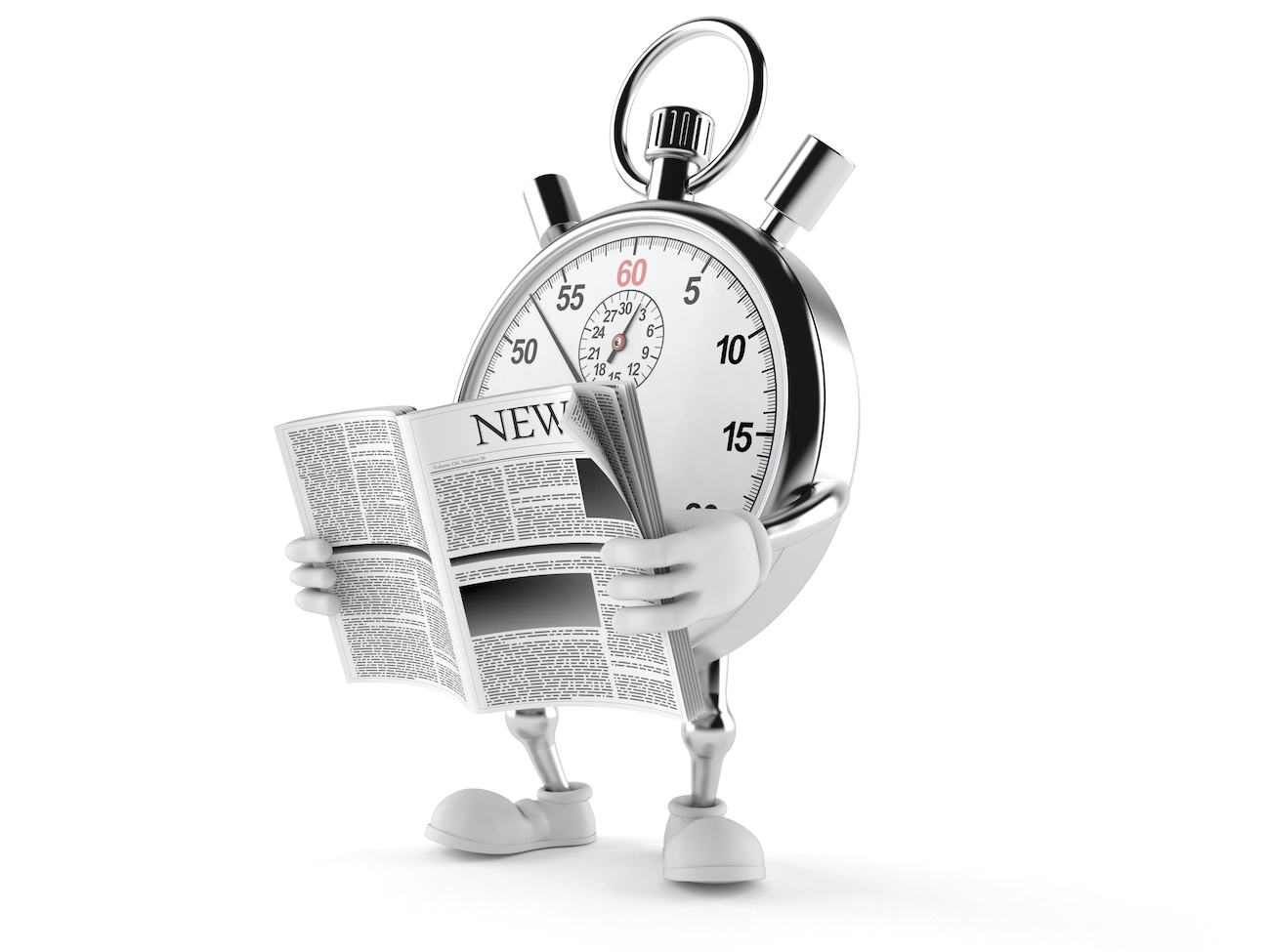How to Determine Average Reading Time
By Ann Wylie
September 2020
Writers measure copy in words, inches or pages. Readers use a different measure: time.
So instead of using writer-centric measures, think like your reader. Measure your story length in time, not space.
Here are some steps to take to do so:
1. Establish estimated reading time.
Before you hit the keyboard, determine how much time you’d expect readers to spend reading each piece you write or assign.
Readers’ average reading speed is about 200 words per minute, estimates Roy Peter Clark, author of “How to Write Short.”
Estimated reading time
x200 words per minute
Word count
So if you are aiming for a two-minute piece, you’ll want to limit it to 400 words.
2 minutes
x200 words per minute
400 words
Readers might not be as interested as you wish. In one London study, for instance, employees spent only about two minutes reading their own CEO’s message. The longest message — Lloyd’s of London’s, at 872 words — got less reading time than the shorter two, from GE and Heinz, at about half that length.
2. Measure estimated reading time.
Now that you have your target, you need to stay on track. During the editing process, divide your total word count by 200 to find the average reading time for your piece.
Word count
/200 words per minute
Estimated reading time
So if your piece is 400 words long, it will take two minutes to read.
400 words
/200 words per minute
2 minutes
3. Reduce estimated reading time.
You might find that it makes sense to cut your piece to save your readers time.
4. Report estimated reading time.
You might be able to encourage readership by letting readers know at the beginning of each piece how long it should take them to read it. So tell them how long it’s going to take to tell them.
If your piece is short enough, then reporting estimated reading time may increase readership. Readers who had planned to put your piece in the pile of things “to read later” may say, “I can spend two minutes on this now.”
To report average reading time, let your readers know at the beginning of each piece — and maybe even in the name, title or headline — how long it should take them to read it.
This approach is trending. For instance, 20 minutes, the Swiss commuter newspaper, reports estimated reading time in its name. So does “Take Five,” the twice-monthly email newsletter for Bank of America employees. And when two minutes is just too long, Fast Company’s “60 Seconds” introduces readers to a tastemaker in just a minute.
Estimated reading time for this piece: 2 minutes.
Copyright © 2020 Ann Wylie. All rights reserved.
Cut Through the Clutter in Your Messages
Want more tips for making every piece you write shorter and easier to read? Join PRSA and Ann Wylie at Catch Your Readers, a persuasive-writing Master Class from Oct. 5-9. You’ll leave with quantifiable targets, tips and techniques for writing shorter words, sentences, paragraphs and messages.



